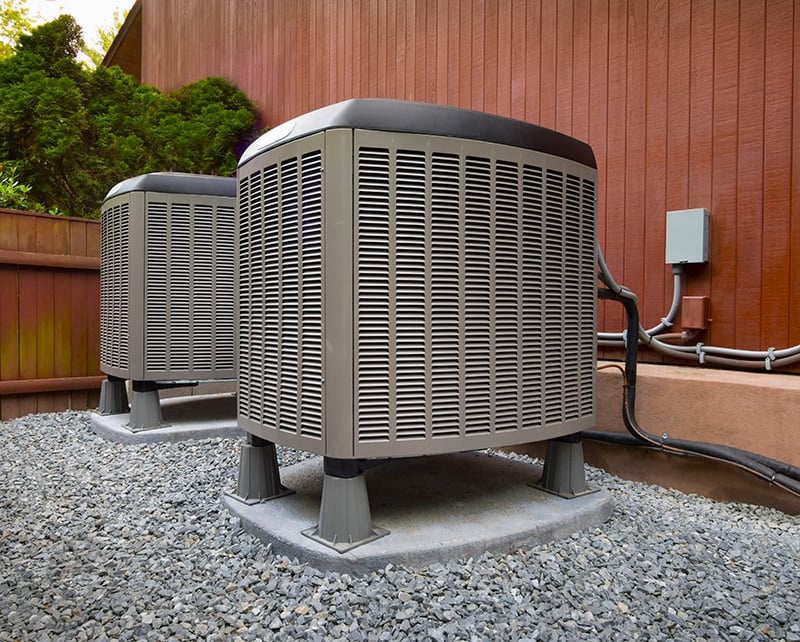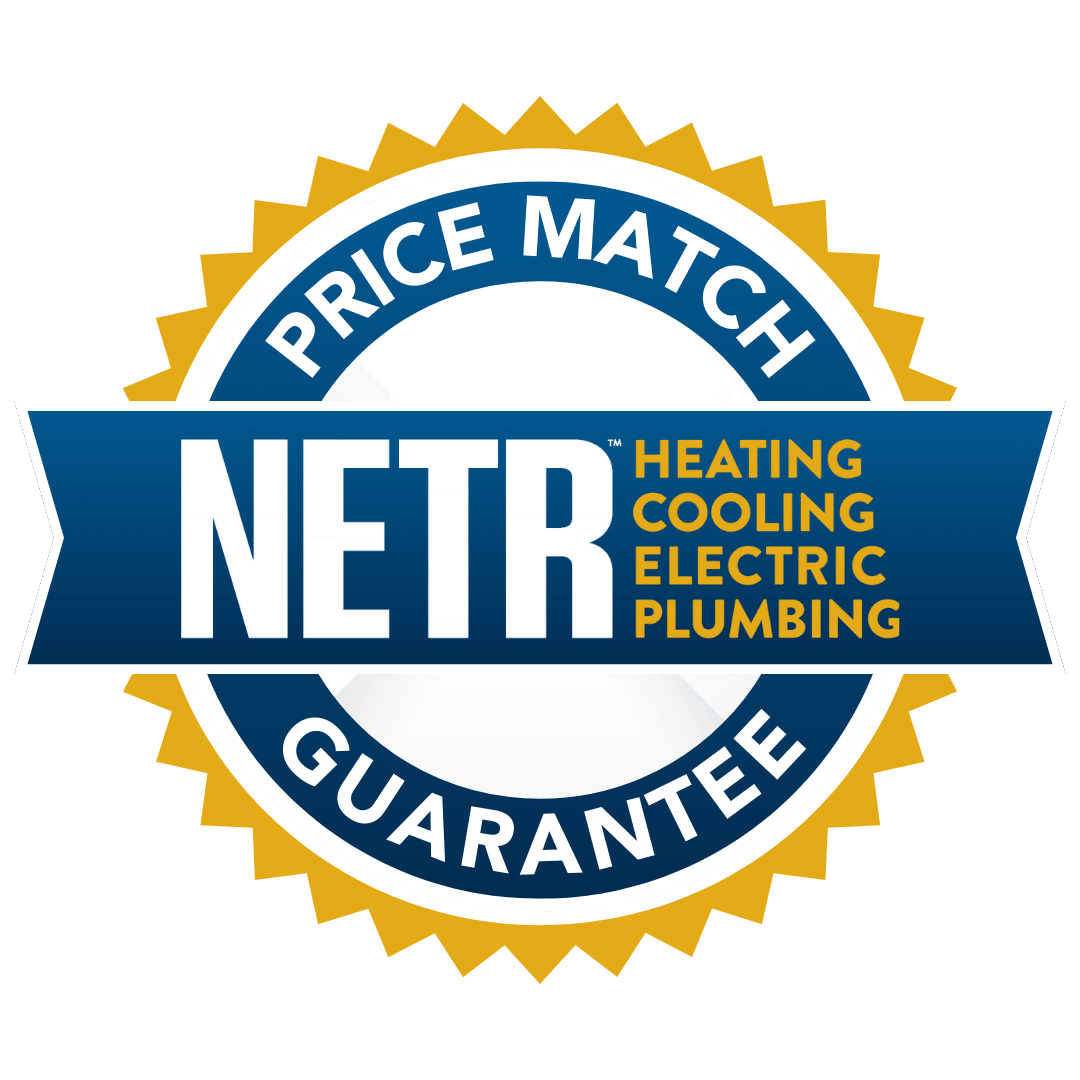Finding more energy-efficient heating solutions is more important than ever before and has significant benefits both consumers and the planet. Consumers can save money on their utility bills while knowing that they are making eco-friendly choices that reduce carbon emissions and contribute to a more sustainable future.
So, what are the most energy-efficient choices? There are several different types of efficient HVAC solutions. But air-source heat pumps (ASHPs) are a front runner, and they’re perfect for keeping you comfortable through the hot summers and cold winters of the New England area.
Want to learn more now? Contact us at N.E.T.R., Inc., or keep reading to learn why these systems are so efficient.

What Is an Air-Source Heat Pump?
An air-source heat pump is a type of HVAC system that keeps your space warm or cool by transferring heat between your home and the outside air. In the winter, heat is extracted from outside and used to warm your home.
In the summer, the process is reversed to remove heat from your indoor air and keep you cool. These units are typically installed on the wall, but can also be placed in the ceiling or inside ductwork for a more streamlined appearance.
6 Reasons Why Air-Source Heat Pumps Are So Efficient
1. They Don’t Burn Fuel
Air-source heat pumps are an incredibly efficient HVAC option, particularly when you compare them to more conventional heating and cooling options. Rather than burning fuel or using electrical resistance to create heat, ASHPs pull heat from the outside air. They then use that heat to warm your home and water.
To put it simply, air-source heat pumps don’t generate heat. Instead, they move it, which takes a lot less energy. By capitalizing on heat that already exists, these systems save a significant amount of energy.
A good way to assess the efficiency of an ASHP is to look at its coefficient of performance. The coefficient of performance (COP) is a ratio comparing the amount of electrical energy used and the amount of heat output created.
(break) A higher COP means more heat generated in comparison to electricity used. For ASHPs, the COP is often between two and four – that means they generate two to four times as much energy as they consume. In comparison, many conventional HVAC systems sit at one or lower, meaning they consume more energy than they produce.
2. You Can Heat and Cool Your Home in Zones
Air-source heat pumps also allow you to customize your heating and cooling needs for different parts of your home. This is called zoning. These systems consist of an outdoor compressor and an indoor air handling unit, and each indoor unit creates its own zone with its own thermostat. The zone technology allows you to customize the settings for different rooms of your home.
With conventional HVAC systems, you have one thermostat that controls your entire home, and as you know, it’s frustrating to have a whole-home system that enforces a set temperature in every room.
If you’re sleeping at night and no one will be in the kitchen or living room for eight hours, why spend energy heating those areas to the same temperature as the bedrooms? Or what if you have different comfort preferences than the other people in your home? An air-source heat pump addresses all of those concerns, while also maximizing efficiency.
Using an air-source heat pump is an easy way to heat and cool each room as needed, leading to more efficient energy usage. Many air-source heat pumps also have smart home capabilities, so you can automate much of this process to accommodate your family’s routines.
3. They Use Minimal Power
One of the key benefits of air-source heat pumps is their minimal power consumption. Their power usage is much lower than what you’ll find among traditional air conditioning systems and electrical resistance heating. This is largely due to how these systems deal with heat.
Rather than having to generate hot or cold air from nothing—a task that requires significant electricity—ASHPs move heat from one area to another. During the winter, they move heat from the outside to the inside, and during the summer, they move heat out of your home.
Additionally, most modern heat pumps feature inverter technology. Rather than powering on and off as they reach the target temperature on the thermostat, air-source heat pumps make slight adjustments to the speed of their compressors. The inverter takes care of this process, and it leads to much more consistent temperatures with lower energy consumption.
4. They Have a Long Lifespan and Low Maintenance Needs
When you invest in an HVAC system or other major home upgrade, you don’t want to worry about replacing or upgrading it every few years. ASHPs are designed to be durable and long-lasting, generally lasting for at least 20 years with proper maintenance. This is environmentally friendly in multiple ways.
First, longer-lasting systems mean that fewer systems are created, reducing the environmental impact of constantly producing new units when old ones break down. Second, keeping your system for five to ten years longer means that fewer systems end up in landfills.
As an added benefit, air-source heat pumps have more limited maintenance needs than conventional heating and cooling systems. Furnaces rely on combustion processes, which cause significant wear and tear on HVAC components. Since ASHPs don’t require these, components last longer, break down less often, and need fewer repairs.
5. They Are Compatible with Solar Panels
Perhaps the most environmentally appealing part of air-source heat pumps is their compatibility with solar panels. When homeowners combine ASHPs with solar panels, they enjoy a system that is incredibly sustainable. They also enjoy lower energy bills, as the panels create the power they need to run their home.
Solar panels create electricity from sunlight, and that electricity goes on to power the air source heat pump. Even if the solar panels do not fully meet the electrical needs of the ASHP, they at least substantially decrease a homeowner’s reliance on traditional electricity options.
6. They Use Variable Speed Compressors
Unlike fixed-speed compressors that only turn on and off to maintain the temperature in a space, ASHPs have variable-speed compressors that constantly adjust their operation based on heating or cooling demand. This means you are using precisely the energy you need and creating little to no waste without sacrificing comfort.
Are You Considering an Air-Source Heat Pump? Let’s Talk
If you think an air-source heat pump is the right choice for your home, it’s time to contact us. At N.E.T.R., Inc., we have the knowledge and experience you need when selecting an air-source heat pump. We will help you choose the perfect set-up for your home and your personal preferences.

